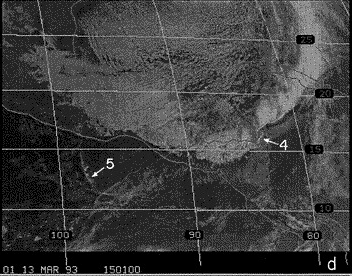The importance of picking good terminology the first time
In an early paper that I lead authored, I used the term cold surge to describe the cold front associated with the Superstorm of March 1993.Schultz, D. M., W. E. Bracken, L. F. Bosart, G. J. Hakim, M. A. Bedrick, M. J. Dickinson, and K. R. Tyle, 1997: The 1993 Superstorm cold surge: Frontal structure, gap flow, and tropical impact. Mon. Wea. Rev., 125, 5-39; Corrigenda, 125, 662.
I don’t remember why I chose that term. In hindsight, I wished I didn’t use it. What we were looking at was simply a cold front. I’m not sure what “surging” is. Is that a dynamical term? Was it meant to imply something about the motion of the cold front?
In the paper, we have a footnote that I guess describes what I was thinking at the time: “As discussed by Davis (1995, p. 1762), the term front suggests a long-lived feature characterized by primarily balanced dynamics, whereas surge indicates a transient, largely unbalanced feature. It is beyond the purpose of this paper to definitively address the degree of balance in this case owing to, in part, the sparseness of the data. Therefore, we will refer to Central American cold surges without the implications of the degree of balance.”
If we didn’t discuss the degree of balance, why not stick to the simpler and more descriptive term cold front? The term would be a more appropriate web search term for those trying to find out information about cold fronts, which is what this feature was.
Like I said, I wish I had just stuck to the term cold front.



